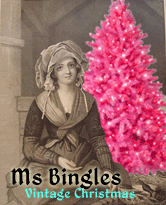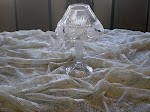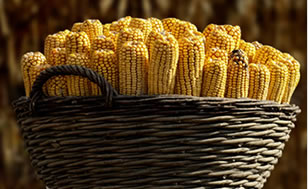Thursday, March 17, 2011
Saturday, March 5, 2011
This Day in History: Hula-Hoop Patented!
1963 : Hula-Hoop patented
On this day in 1963, the Hula-Hoop, a hip-swiveling toy that became a huge fad across America when it was first marketed by Wham-O in 1958, is patented by the company's co-founder, Arthur "Spud" Melin. An estimated 25 million Hula-Hoops were sold in its first four months of production alone.
In 1948, friends Arthur Melin and Richard Knerr founded a company in California to sell a slingshot they created to shoot meat up to falcons they used for hunting. The company's name, Wham-O, came from the sound the slingshots supposedly made. Wham-O eventually branched out from slingshots, selling boomerangs and other sporting goods. Its first hit toy, a flying plastic disc known as the Frisbee, debuted in 1957. The Frisbee was originally marketed under a different name, the Pluto Platter, in an effort to capitalize on America's fascination with UFOs.
Melina and Knerr were inspired to develop the Hula-Hoop after they saw a wooden hoop that Australian children twirled around their waists during gym class. Wham-O began producing a plastic version of the hoop, dubbed "Hula" after the hip-gyrating Hawaiian dance of the same name, and demonstrating it on Southern California playgrounds. Hula-Hoop mania took off from there.
The enormous popularity of the Hula-Hoop was short-lived and within a matter of months, the masses were on to the next big thing. However, the Hula-Hoop never faded away completely and still has its fans today. According to Ripley's Believe It or Not, in April 2004, a performer at the Big Apple Circus in Boston simultaneously spun 100 hoops around her body. Earlier that same year, in January, according to the Guinness World Records, two people in Tokyo, Japan, managed to spin the world's largest hoop--at 13 feet, 4 inches--around their waists at least three times each.
Following the Hula-Hoop, Wham-O continued to produce a steady stream of wacky and beloved novelty items, including the Superball, Water Wiggle, Silly String, Slip 'n' Slide and the Hacky Sack.
Wednesday, February 23, 2011
This Day In History-Guthrie Writes "This Land is Your Land"
Guthrie Writes "This Land is Your Land"
Folk singer Woody Guthrie writes one of his best-known songs, "This Land is Your Land."
Born in Okemah, Oklahoma, in 1912, Guthrie lived and wrote of the real West, a place of hard-working people and harsh environments rather than romantic cowboys and explorers. Though he was a son of a successful politician and businessman, during his early teens his mother fell ill and the family split apart. For several years, Guthrie spent his summers working as a migrant agricultural laborer. When he was 15, he left home to travel the country by freight train. Among his meager possessions were a guitar and harmonica. Guthrie discovered an eager audience among the hobos and migrant workers for the country-folk songs he had learned in Oklahoma.
In 1937, he traveled to California where he hoped to become a successful western singer. He appeared on several West Coast radio shows, mostly performing traditional folk songs. Soon, though, he began to perform his own pieces based on his experiences living among the vast armies of the poor and dispossessed created by the Great Depression. While in California he also came into contact with the Communist Party and became increasingly sympathetic to its causes. Many of his songs reflected a strong commitment to the common working people, and he became something of a musical spokesman for populist sentiments.
"This Land is Your Land," reflected not only Guthrie's support for the common folk, but also his deep love for his country. The verse celebrated the beauty and grandeur of America while the chorus drove home the populist sentiment that the nation belonged to all the people, not merely the rich and powerful. Probably the most famous of his more than 1,000 songs, "This Land is Your Land" was also one of his last. Later that year Guthrie moved to New York where his career was soon after interrupted by World War II. After serving in the Merchant Marines, he returned to New York, where he continued to perform and record his old material, but he never matched his earlier prolific output.
Guthrie's career was cut short in 1954, when he was struck with Huntington's Disease, a degenerative illness of the nervous system that had killed his mother. His later years were spent in a New York hospital where he received visitors like the adoring young Bob Dylan, who copied much of his early style from Guthrie. Guthrie died in 1967, having lived long enough to see his music inspire a whole new generation and "This Land is Your Land" become a rallying song for the Civil Rights movement.
Friday, February 4, 2011
Feb. 4, 1974: Patty Hearst Kidnapped!
February 4, 1974 : Patty Hearst Kidnapped
On February 4, 1974, Patty Hearst, the 19-year-old daughter of newspaper publisher Randolph Hearst, is kidnapped from her apartment in Berkeley, California, by two black men and a white woman, all three of whom are armed. Her fiance, Stephen Weed, was beaten and tied up along with a neighbor who tried to help. Witnesses reported seeing a struggling Hearst being carried away blindfolded, and she was put in the trunk of a car. Neighbors who came out into the street were forced to take cover after the kidnappers fired their guns to cover their escape.
Three days later, the Symbionese Liberation Army (SLA), a small U.S. leftist group, announced in a letter to a Berkeley radio station that it was holding Hearst as a "prisoner of war." Four days later, the SLA demanded that the Hearst family give $70 in foodstuffs to every needy person from Santa Rosa to Los Angeles. This done, said the SLA, negotiation would begin for the return of Patricia Hearst. Randolph Hearst hesitantly gave away some $2 million worth of food. The SLA then called this inadequate and asked for $6 million more. The Hearst Corporation said it would donate the additional sum if the girl was released unharmed.
In April, however, the situation changed dramatically when a surveillance camera took a photo of Hearst participating in an armed robbery of a San Francisco bank, and she was also spotted during a robbery of a Los Angeles store. She later declared, in a tape sent to the authorities, that she had joined the SLA of her own free will.
On May 17, Los Angeles police raided the SLA's secret headquarters, killing six of the group's nine known members. Among the dead was the SLA's leader, Donald DeFreeze, an African American ex-convict who called himself General Field Marshal Cinque. Patty Hearst and two other SLA members wanted for the April bank robbery were not on the premises.
Finally, on September 18, 1975, after crisscrossing the country with her captors--or conspirators--for more than a year, Hearst, or "Tania" as she called herself, was captured in a San Francisco apartment and arrested for armed robbery. Despite her claim that she had been brainwashed by the SLA, she was convicted on March 20, 1976, and sentenced to seven years in prison. She served 21 months before her sentence was commuted by President Carter. After leaving prison, she returned to a more routine existence and later married her bodyguard. She was pardoned by President Clinton in January 2001.
Thursday, December 30, 2010
A Christmas Truce 1914
A cross, left near Ypres in Belgium in 1999, to commemorate the site of the Christmas Truce in 1914. The text reads: “1914 The Khaki Chum’s Christmas Truce 1999 85 Years Lest We Forget.”
Dec. 25, 1914
The Christmas Truce
The following story (and variants thereof) are being sent via email to people the world over. It may sound like an urban legend but according to Snopes and other reliable sources, it is absolutely true. From Snopes:
“SILENT NIGHT, HOLY NIGHT”
During World War I, in the winter of 1914, on the battlefields of Flanders, one of the most unusual events in all of human history took place. The Germans had been in a fierce battle with the British and French. Both sides were dug in, safe in muddy, man-made trenches six to eight feet deep that seemed to stretch forever.
All of a sudden, German troops began to put small Christmas trees, lit with candles, outside of their trenches. Then, they began to sing songs. Across the way, in the “no man’s land” between them, came songs from the British and French troops. Incredibly, many of the Germans, who had worked in England before the war, were able to speak good enough English to propose a “Christmas” truce.
The British and French troops, all along the miles of trenches, accepted. In a few places, allied troops fired at the Germans as they climbed out of their trenches. But the Germans were persistent and Christmas would be celebrated even under the threat of impending death.
According to Stanley Weintraub, who wrote about this event in his book, Silent Night, “signboards arose up and down the trenches in a variety of shapes. They were usually in English, or – from the Germans – in fractured English. Rightly, the Germans assumed that the other side could not read traditional gothic lettering, and that few English understood spoken German. ‘YOU NO FIGHT, WE NO FIGHT’ was the most frequently employed German message. Some British units improvised ‘MERRY CHRISTMAS’ banners and waited for a response. More placards on both sides popped up.”
A spontaneous truce resulted. Soldiers left their trenches, meeting in the middle to shake hands. The first order of business was to bury the dead who had been previously unreachable because of the conflict.
Then, they exchanged gifts. Chocolate cake, cognac, postcards, newspapers, tobacco. In a few places, along the trenches, soldiers exchanged rifles for soccer balls and began to play games.
It didn’t last forever. In fact, some of the generals didn’t like it at all and commanded their troops to resume shooting at each other. After all, they were in a war. Soldiers eventually did resume shooting at each other. But only after, in a number of cases, a few days of wasting rounds of ammunition shooting at stars in the sky instead of soldiers in the opposing army across the field.
For a few precious moments there was peace on earth good will toward men. All because the focus was on Christmas. Happens every time. There’s something about Christmas that changes people. It happened over 2000 years ago in a little town called Bethlehem. It’s been happening over and over again down through the years of time. God willing, it will happen again...
Just after midnight on Christmas morning, the majority of German troops engaged in World War I cease firing their guns and artillery and commence to sing Christmas carols. At certain points along the eastern and western fronts, the soldiers of Russia, France, and Britain even heard brass bands joining the Germans in their joyous singing.
At the first light of dawn, many of the German soldiers emerged from their trenches and approached the Allied lines across no-man's-land, calling out "Merry Christmas" in their enemies' native tongues. At first, the Allied soldiers feared it was a trick, but seeing the Germans unarmed they climbed out of their trenches and shook hands with the enemy soldiers. The men exchanged presents of cigarettes and plum puddings and sang carols and songs. There was even a documented case of soldiers from opposing sides playing a good-natured game of soccer.
The so-called Christmas Truce of 1914 came only five months after the outbreak of war in Europe and was one of the last examples of the outdated notion of chivalry between enemies in warfare. In 1915, the bloody conflict of World War I erupted in all its technological fury, and the concept of another Christmas Truce became unthinkable.
Saturday, November 27, 2010
Thanksgiving!
The History of Thanksgiving
Early Puritans observed Thanksgiving days of prayer, but Sarah Josepha Hale's, the author of Mary Had a Little Lamb, crusade for a national day of thanks is what ultimately gave us Thanksgiving.
The Pilgrim's Menu
Foods That May Have Been on the Menu
Seafood: Cod, Eel, Clams, Lobster Wild Fowl: Wild Turkey, Goose, Duck, Crane, Swan, Partridge, Eagles Meat: Venison, Seal Grain: Wheat Flour, Indian Corn Vegetables: Pumpkin, Peas, Beans, Onions, Lettuce, Radishes, Carrots Fruit: Plums, Grapes Nuts: Walnuts, Chestnuts, Acorns Herbs and Seasonings: Olive Oil, Liverwort, Leeks, Dried Currants, Parsnips
What Was Not on the Menu
Surprisingly, the following foods, all considered staples of the modern Thanksgiving meal, didn't appear on the pilgrims's first feast table:
Ham: There is no evidence that the colonists had butchered a pig by this time, though they had brought pigs with them from England. Sweet Potatoes/Potatoes: These were not common. Corn on the Cob: Corn was kept dried out at this time of year. Cranberry Sauce: The colonists had cranberries but no sugar at this time. Pumpkin Pie: It's not a recipe that exists at this point, though the pilgrims had recipes for stewed pumpkin. Chicken/Eggs: We know that the colonists brought hens with them from England, but it's unknown how many they had left at this point or whether the hens were still laying. Milk: No cows had been aboard the Mayflower, though it's possible that the colonists used goat milk to make cheese.
Thanks to History.Com
Sunday, October 24, 2010
This Day In History-Over Niagra Falls In A Barrel!
October 24:
1901, First Barrel Ride Down Niagara Falls
On this day in 1901, a 63-year-old schoolteacher named Annie Edson Taylor becomes the first person to take the plunge over Niagara Falls in a barrel.
After her husband died in the Civil War, the New York-born Taylor moved all over the U. S. before settling in Bay City, Michigan, around 1898. In July 1901, while reading an article about the Pan-American Exposition in Buffalo, she learned of the growing popularity of two enormous waterfalls located on the border of upstate New York and Canada. Strapped for cash and seeking fame, Taylor came up with the perfect attention-getting stunt: She would go over Niagara Falls in a barrel.
Taylor was not the first person to attempt the plunge over the famous falls. In October 1829, Sam Patch, known as the Yankee Leaper, survived jumping down the 175-foot Horseshoe Falls of the Niagara River, on the Canadian side of the border. More than 70 years later, Taylor chose to take the ride on her birthday, October 24. (She claimed she was in her 40s, but genealogical records later showed she was 63.) With the help of two assistants, Taylor strapped herself into a leather harness inside an old wooden pickle barrel five feet high and three feet in diameter. With cushions lining the barrel to break her fall, Taylor was towed by a small boat into the middle of the fast-flowing Niagara River and cut loose.
The first barrel trip over the Falls was made by Annie Edson Taylor, a school teacher from Bay City Michigan, on October 4, 1901. Annie's barrel was curiously constructed, tapered almost to a point at the bottom and bound with metal hoops. It was padded with pillows and had a 45.4 kg (100 lb.) anvil in its bottom to keep it upright as it floated downriver.
It had an air supply, "enough to last her a week", forced into the barrel with a common bicycle pump after the barrel's lid was closed. To ensure that the barrel would float down the river and over the Horseshoe Falls, it had to be set adrift in the Canadian current. It would have been impossible for Canadian authorities to stop her trip even if they had wanted to, because Annie's handlers towed the barrel from Grass Island on the United States side and into the Canadian current where it was set adrift at 4:05 p.m. Knocked violently from side to side by the rapids and then propelled over the edge of Horseshoe Falls, the barrel tipped slightly forward as it went over the brink of the Horseshoe Falls and disappeared behind the curtain of falling water. Seventeen minutes later it floated out from behind the Falls and was stranded on the rocks close to the location of the present day Table Rock Observation Platform. The barrel was opened and Annie Taylor emerged, delirious and with a slight cut on her jaw.
Taylor reached the shore alive, if a bit battered, around 20 minutes after her journey began. She made the trip in an attempt to achieve fame and fortune. Taylor's fame cooled, and she was unable to make the fortune for which she had hoped. but achieved neither in her lifetime. She died in the poorhouse twenty years later. After a brief flurry of photo-ops and speaking engagements, she did, however, inspire a number of copy-cat daredevils. Between 1901 and 1995, 15 people went over the falls; 10 of them survived. Among those who died were Jesse Sharp, who took the plunge in a kayak in 1990, and Robert Overcracker, who used a jet ski in 1995. No matter the method, going over Niagara Falls is illegal, and survivors face charges and stiff fines on either side of the border.
Subscribe to:
Posts (Atom)













































